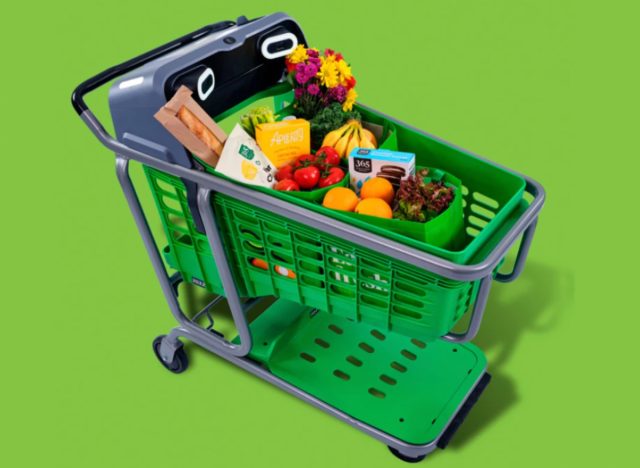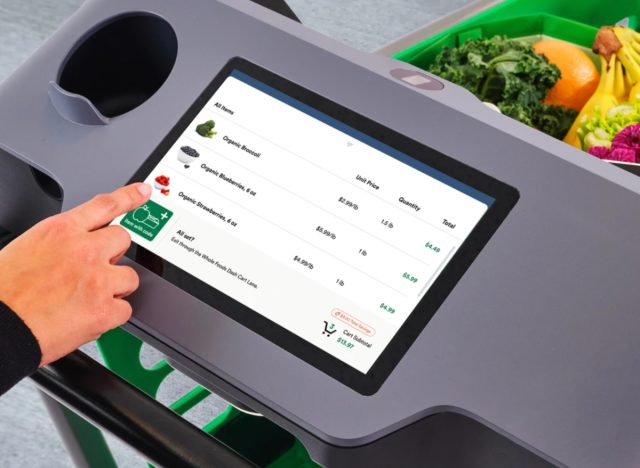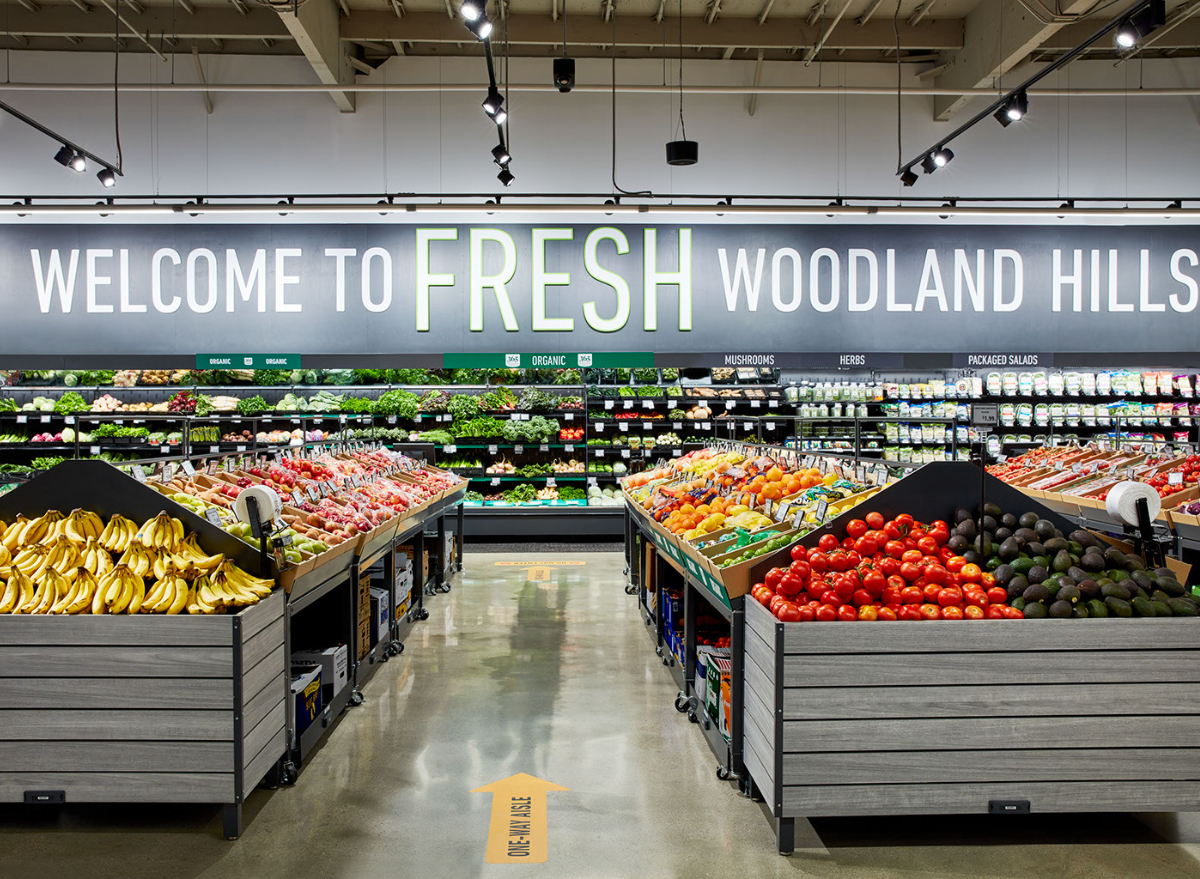Amazon Is Adding This to Some of Its Grocery Stores Nationwide
Amazon officially entered into the grocery business just five years ago with its acquisition of Whole Foods and has since been on a mission to completely redesign the grocery shopping experience. The introduction of Amazon Go and Amazon Fresh stores have pushed the tech giant closer to this goal and each come complete with numerous bells and whistles, all crafted with customer convenience in mind.
Just Walk Out technology and the Amazon One payment system are just two examples of advanced features which await at Amazon's physical stores—as well as state-of-the-art Dash Carts. These smart shopping carts, which debuted in 2020, instantly track each item entering customers' baskets and then automatically charges their Amazon account once they leave the store for a quick, cashierless experience.
RELATED: America's Largest Grocery Chain Is Rivaling Walmart, Costco, and Amazon With This
Now, Amazon is taking the Dash Cart a step further with a new and improved version featuring a handful of significant updates. This new design will be introduced at Whole Foods stores in the coming months—the first time the chain has seen this technology.
According to Amazon's Vice President of Physical Retail and Technology, Dilip Kumar, the cart changes were a "result of customer feedback, improved computer vision and sensor fusion technology, and backend innovation and testing."

Many new features revolve around the cart's physical appearance and grocery capacity—one of the core shortcomings of its initial build. The improved Dash Cart is able to hold twice as much—four grocery bags instead of just two—and includes a lower shelf for larger items as well as a delicates shelf. The cart is also constructed to be more durable and weather-resistant, proven with multiple intensive stress tests, but comes in at a lighter overall weight.
Of course, as an Amazon gadget, the new carts come equipped with a few exciting technical upgrades as well. In addition to viewing an Alexa Shopping List through the cart's display screen, shoppers will now also be able to view images of nearby grocery items in the store. This feature stems from the cart's ability to more accurately track where the shopper is amongst the grocery aisles.

Customers will also no longer need a four-digit PLU code to search for items on the screen, but can also type in the specific item name–similar to how many self-checkouts operate. Last, but certainly not least, the carts' extended all-day battery life will allow them to spend more time with customers and less time charging.
Dash Carts are currently available in Amazon Fresh stores, but the modified design will actually be launched for the first time at a Whole Foods Market in Westford, Massachusetts—to be followed by a larger rollout to a few other Whole Foods and Amazon Fresh locations across the country.
While Amazon pioneered the in-store use of smart shopping carts, other grocery chains are catching onto the idea. Kroger has piloted its own breed of AI-powered KroGo carts powered by the software technology company Caper. And, Albertsons' self-checkout grocery carts, made by Veeve, were introduced at two stores in Idaho and California for the first time late in 2021.










